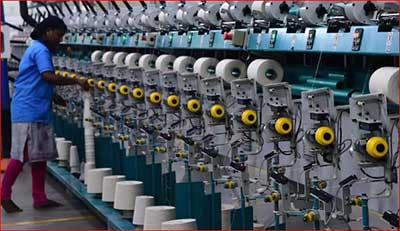Date: 21/03/2023
Relevance: GS-3: Indian Economy and issues relating to planning, mobilization, of resources, growth, development and employment.
Key Phrases: Production Linked Incentives, foreign investment, Atmanirbhar Bharat Abhiyaan, fund disbursement, infrastructure and human capital, Micro, Small & Medium Enterprises (MSMEs).
Context:
- The government has been attempting to spruce up the manufacturing sector for a long time now, but still, it remains a sore spot in India’s growth story.
- Production Linked Incentives (PLI) scheme is one such initiative under the flagship Atmanirbhar Bharat Abhiyaan.
Key Highlights:
- PLI is often touted as the panacea to India’s manufacturing problems.
- A number of scholars and experts feel that the PLI can significantly restructure India’s domestic manufacturing, push its share in the GDP to 25 per cent and foster seamless upgradation of domestic firms into the regional and global production networks.
What is a production-linked Incentives scheme?
- Production Linked Incentive (PLI) is a scheme launched by the Government of India in 2020 to boost domestic manufacturing in various sectors by providing financial incentives to manufacturers who meet specific production targets.
- The scheme aims to attract foreign investment, create employment opportunities, increase production and exports, and reduce dependence on imports.
- Under the PLI scheme, eligible manufacturers are provided financial incentives in the form of cash rewards for a certain percentage of their incremental sales over the base year.
- The scheme is applicable to various sectors, including Auto components, Automobile, Aviation, Chemicals, Electronic systems, Food processing, Medical devices, Metals & mining, Pharmaceuticals, Renewable energy, Telecom, Textiles & apparel, White goods.

Pros of PLI :
- Boost to domestic manufacturing:
- The PLI scheme aims to promote domestic manufacturing and reduce dependence on imports.
- It will encourage companies to invest in setting up new manufacturing units and expanding existing ones, creating employment opportunities and boosting the economy.
- Attract foreign investment:
- The scheme is expected to attract foreign investment in various sectors, leading to technology transfer and increased competitiveness of domestic manufacturers.
- Increase in production and exports:
- The financial incentives provided under the scheme are linked to production and sales targets, which will encourage companies to increase production and exports.
Challenges Associated
- Ambiguity in fund disbursement:
- An Empowered Committee has been constituted by the government for overseeing the scheme’s implementation; it is additionally responsible for fund disbursement under each sector.
- But the manner in which these incentives are to be awarded remains ambiguous.
- There are no set criteria or common parameters for consideration by the ministries and departments for giving these incentives.
- Lack of a centralised database:
- Further, the lack of a centralised database that captures information like an increase in production or exports, the number of new jobs created etc. makes the evaluation process an administrative nightmare.
- This information ambiguity impacts transparency and can lead to malfeasance, further widening the fault lines and weakening the policy structure.
- Greatly predisposed to larger firms:
- Unlike what was promised, the scheme’s orientation appears to be greatly predisposed to larger firms.
- Evidence from fund disbursement in some of the PLI sectors alludes to a bias towards bigger players.
- Not representative of the actual configuration:
- Beneficiary sectors under the scheme such as automobiles, electronics and technical textiles are largely constituted by big firms.
- Obviously, this is not representative of the actual configuration of the Indian industrial structure, which is largely composed of Micro, Small & Medium Enterprises (MSMEs).
- These MSMEs not just contribute to a bulk of the manufacturing output and exports but generate much of the employment in the manufacturing sector.
- High cost:
- The PLI scheme involves a significant amount of government expenditure, which could lead to a strain on the fiscal deficit.
- Risk of misallocation of funds:
- There is a risk that the financial incentives provided under the scheme could be misused or misallocated, leading to inefficiencies and corruption.
- Uneven distribution of benefits:
- The benefits of the PLI scheme may not be evenly distributed among all manufacturers, with larger companies potentially benefiting more than smaller ones.
- Difficulty in achieving production targets:
- Meeting the production targets set under the PLI scheme may be challenging for some manufacturers, especially in sectors with a highly competitive market.
Conclusion:
- To ensure the PLI scheme's success, policymakers must address the structural problems within the policy design and economic system.
- The government must invest in infrastructure and human capital development to attract foreign investment and increase the competitiveness of the manufacturing sector.
- Additionally, the government must simplify regulations, reduce bureaucracy, and provide a stable policy environment to encourage innovation and entrepreneurship.
- The government must promote sustainable practices, encourage R&D, and promote the production of high-quality products to enhance India's global competitiveness.
Source: The Hindu BL
Mains Question:
Q. Discuss the intended and unintended effects of India's Production Linked Incentive (PLI) scheme to boost manufacturing in various sectors. Examine the structural problems within the policy design and economic system that need to be addressed for the scheme to deliver positive results. (250 Words).







